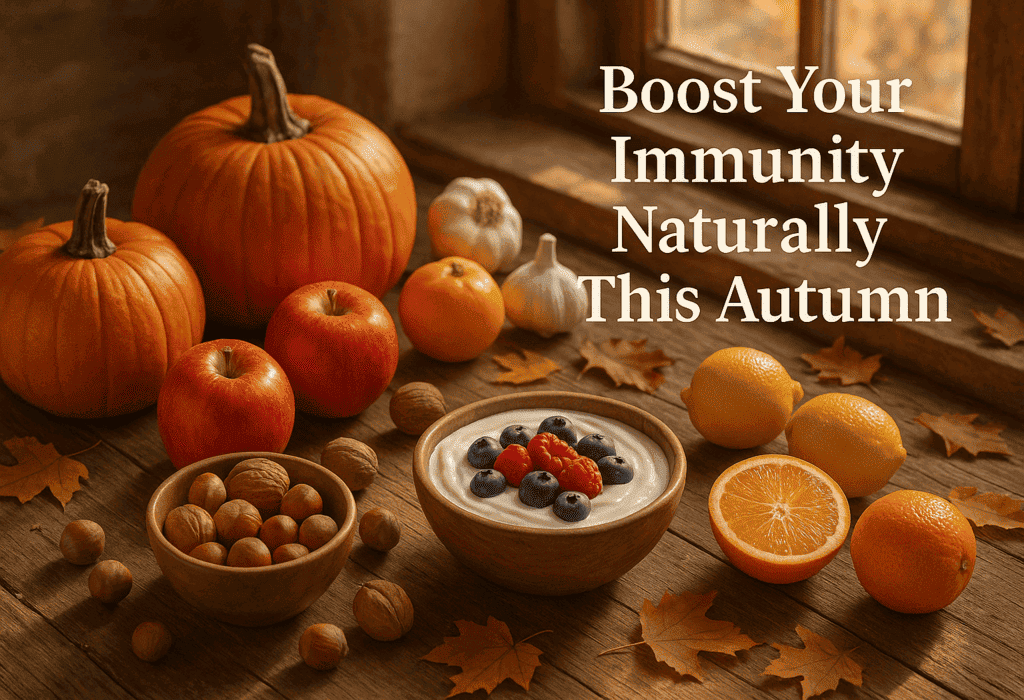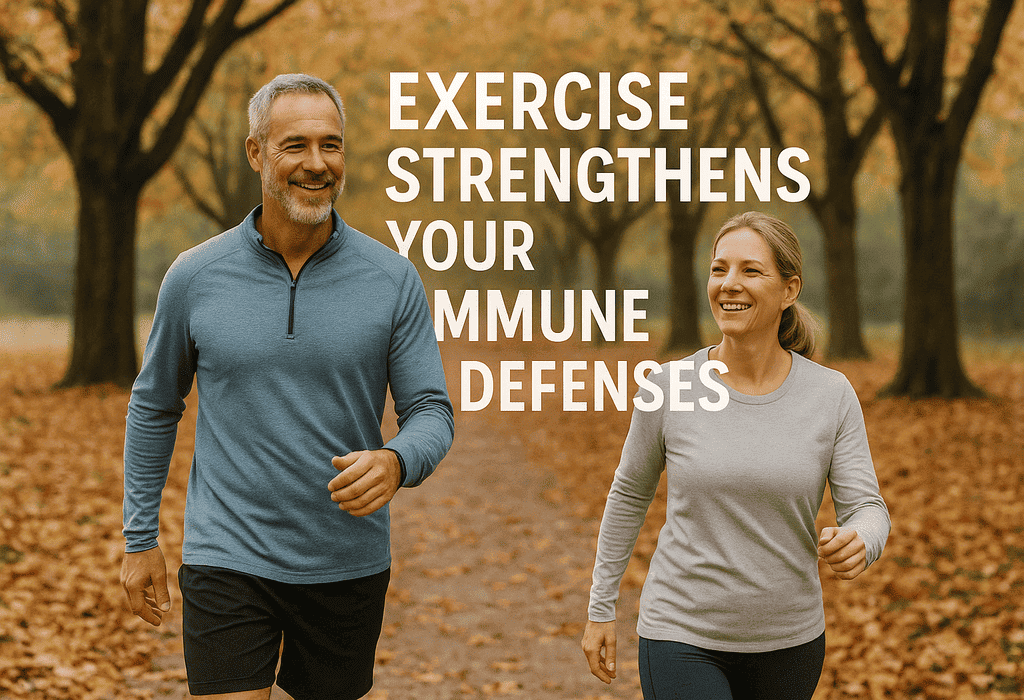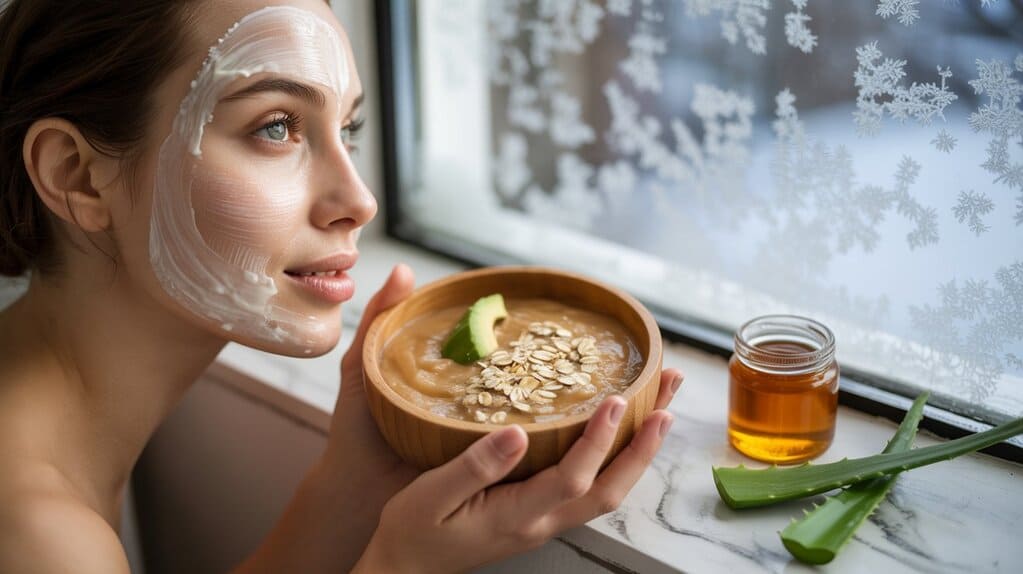
Introduction
Autumn brings cooler air, changing daylight hours, and the return of seasonal colds and respiratory infections. Preparing your body for this transition means more than wearing a warmer coat — it means supporting your immune system naturally with lifestyle, nutrition, and simple daily habits. This guide explains evidence-based, natural strategies to strengthen immunity in autumn, highlights key nutrients and behaviors, and references recent scientific studies and reputable health sources from Asia, America, and Europe. Practical tips, a summary table of recommended foods and actions, and a reference list are included so you can apply these tips with confidence.
Key points (at-a-glance)
- Sleep, nutrition, exercise, vitamin D, zinc, vitamin C, and gut health are major, modifiable factors that influence immunity. PMC+1
- Seasonal changes (less sunlight, indoor crowding) increase respiratory infections—strengthen defenses early in autumn. Frontiers+1
- Small, sustainable daily habits (7–9 hours sleep, moderate exercise, whole-food diet, targeted supplementation when needed) deliver the best protection. PMC+1
Why autumn matters for immunity
In temperate regions, many respiratory viruses show seasonal peaks from autumn into winter. Several mechanisms explain this pattern: less UV light (reducing vitamin D synthesis), colder/drier air that helps viruses remain infectious, and more time spent indoors increasing exposure. Strengthening immune resilience before and during autumn reduces the likelihood and severity of infections. Frontiers+1

Natural strategies to strengthen immunity
1. Prioritize restorative sleep
Quality sleep is foundational. Sleep regulates innate and adaptive immunity, affects cytokine production, and influences vaccine responses. Aim for 7–9 hours per night with consistent bed and wake times. Address sleep disorders (like sleep apnea or chronic insomnia) with a healthcare provider because untreated sleep problems raise infection risk. PMC+1
Practical tips:
- Keep a cool, dark bedroom and avoid screens 60–90 minutes before bedtime.
- Use a regular wind-down routine (reading, stretching, calming tea).
- If you snore, consult a clinician to rule out obstructive sleep apnea.
2. Optimize vitamin D — especially as daylight decreases
Vitamin D plays dual roles in supporting antiviral defenses and modulating inflammation. Sunlight (UV-B) is the main natural source, but autumn daylight is often insufficient in higher latitudes. Testing and targeted supplementation are reasonable for people at risk of deficiency (older adults, darker skin, little sun exposure). Recent reviews and randomized trials from multiple regions show vitamin D supplementation can modulate immune markers and improve outcomes in deficiency states. PMC+2Nature+2
Guidance:
- Consider a blood test (25(OH)D) if you’re at risk; follow clinician guidance for dosing.
- Food sources: fatty fish (salmon, mackerel), fortified dairy/plant milks, eggs.
3. Support gut health and probiotics
A healthy gut microbiome communicates continuously with the immune system. Prebiotics (fiber) and selected probiotics have shown beneficial modulation of immune markers (salivary IgA, cytokines) and may reduce some respiratory symptom severity in trials. While not a cure-all, promoting gut diversity with whole plant foods, fermented foods, and, when appropriate, a clinically studied probiotic strain can be helpful. PMC+1
Practical choices:
- Eat fiber-rich vegetables, whole grains, legumes, and fermented foods (yogurt, kefir, kimchi).
- If using probiotics, choose products with documented strains and clinical data.
4. Maintain moderate, regular exercise
Regular moderate-intensity exercise (brisk walking, cycling, swimming) boosts immune surveillance, reduces chronic inflammation, and supports mental health. Avoid repeated bouts of extreme, prolonged exertion without rest, which can transiently suppress immunity. Build a routine of 150–300 minutes per week of moderate activity. PMC+1
Practical tips:
- Include two sessions of strength or resistance work weekly.
- Keep workouts consistent rather than extreme spikes in training.

5. Ensure adequate intake of key micronutrients
Some nutrients are repeatedly linked with immune function:
- Vitamin C — supports antioxidant defenses and immune cell function; contributes to reduced duration of colds in some studies. PMC
- Zinc — essential for innate and adaptive immunity; supplementation reduced duration of respiratory symptoms in multiple trials when started early. People with low zinc levels or older adults may benefit most. PMC+1
- Selenium, iron, B vitamins — support cellular immunity and energy for immune responses. Balanced diet generally supplies these; test and treat deficiencies.
Table: Recommended food sources and practical targets
| Nutrient | Practical food sources | Practical daily guidance |
|---|---|---|
| Vitamin D | Fatty fish, fortified milk, eggs | Test 25(OH)D if at risk; supplement per clinician |
| Vitamin C | Citrus, bell peppers, kiwi, strawberries | Aim for 75–120 mg/day from diet; higher short-term with illness |
| Zinc | Oysters, red meat, legumes, seeds | Dietary zinc first; supplements if deficiency/risk |
| Fiber / Prebiotics | Onions, garlic, leeks, whole grains | 25–30 g/day of mixed fiber |
| Protein | Lean meat, fish, dairy, legumes | 0.8–1.2 g/kg/day (higher in older adults) |
(This table summarizes dietary strategies and is not a substitute for personalized medical advice.)
6. Manage stress and mental health
Chronic psychological stress dysregulates immune function and raises vulnerability to infections. Mindfulness, cognitive-behavioral techniques, social connection, and counseling where needed all contribute to better immune resilience. Even short daily stress-reduction practices (10–20 minutes) improve sleep and immune markers in clinical studies. PMC+1
7. Hygienic and behavioral measures (complement, don’t replace)
Natural immune strengthening should be combined with public-health basics during autumn outbreaks: hand hygiene, good ventilation indoors, staying home when ill, and keeping up with recommended vaccinations (influenza, as appropriate). These reduce exposure and support the immune system’s work. CDC

Practical autumn daily routine (example)
Morning: sunlight exposure (10–20 min if possible), protein-rich breakfast, 10–15 min brisk walk.
Midday: balanced lunch (vegetables, whole grains, lean protein), short mindfulness break.
Evening: vitamin D or targeted supplement if prescribed, light resistance routine twice weekly, wind-down without screens for sleep quality.
Recent scientific support (examples from Asia, America, Europe)
- Vitamin D — Reviews and trials from Europe and North America emphasize vitamin D’s immune-modulating roles and the need to correct deficiency, particularly in low-sunlight seasons. PMC+1
- Exercise and immunity — International reviews (authors from Brazil, USA, Europe) show regular moderate exercise reduces inflammation and boosts immune surveillance. PMC+1
- Sleep and infection risk — Recent work from research groups in Asia, Europe, and North America links sleep disturbance to increased risk and worse outcomes from respiratory infections, including COVID-19. PMC+1
- Zinc and micronutrients — Trials and reviews from multiple continents highlight zinc’s role in respiratory infection outcomes and the importance of addressing deficiency. PMC+1
- Seasonality research — Global public health studies (CDC, Frontiers) document seasonal circulation patterns of influenza, RSV, and other respiratory viruses and how behavior and environment influence infection risk. Frontiers+1

Common questions
Should everyone take vitamins in autumn?
Not necessarily. Whole-food first is best. Test for deficiencies (vitamin D, iron, B12) where risk exists. Short, clinician-guided supplementation can be very helpful for those deficient. Nature+1
Do probiotics prevent colds?
Some probiotic strains have shown modest benefits on immune markers and symptom duration in trials; effects are strain-specific and not universal. Use products with documented strains and clinical evidence. PMC+1
Conclusion
Autumn is an ideal time to adopt sustainable, natural strategies that fortify your immune system. Prioritize sleep, balanced nutrition (with attention to vitamin D, zinc, and vitamin C), gut health, moderate exercise, and stress management. Combine these internal defenses with sensible behavioral measures (hygiene, ventilation, and vaccination when recommended) to reduce illness risk. These practices are supported by recent research across Asia, America, and Europe and are adaptable to individual needs. Begin small, make habits consistent, and consult a healthcare professional for testing or before starting high-dose supplements.
References & further reading
(Selected scientific articles, reviews, and public health sources cited above)
- Fenercioglu AK, et al. The Anti-Inflammatory Roles of Vitamin D for Improving … 2024. PMC
- Emadzadeh M, et al. A Systematic Review of Randomized Controlled Trials (probiotics and COVID-19), 2024. PMC
- Zhou J, et al. Pre-existing sleep disturbances and risk of COVID-19, 2024. PMC
- da Silveira MP, et al. Physical exercise as a tool to help the immune system, 2020. PMC
- Firouzi S, et al. The effect of Vitamin C and Zn supplementation on …, 2022. PMC
- Audi A, et al. Seasonality of Respiratory Viral Infections: Will COVID-19 …, Frontiers in Public Health, 2020. Frontiers
- Deepika, et al. Vitamin D: recent advances, Nature Food, 2025. Nature
- Mazziotta C, et al. Probiotics Mechanism of Action on Immune Cells, 2023. PMC
- Arazi H, et al. Moderate Intensity Aerobic Exercise Potential Favorable …, 2021. PMC
- Jin D, et al. The nutritional roles of zinc for immune system and COVID- …, 2024. PMC
- CDC report: Human Metapneumovirus Seasonality and Co-Circulation… MMWR, 2025. CDC







